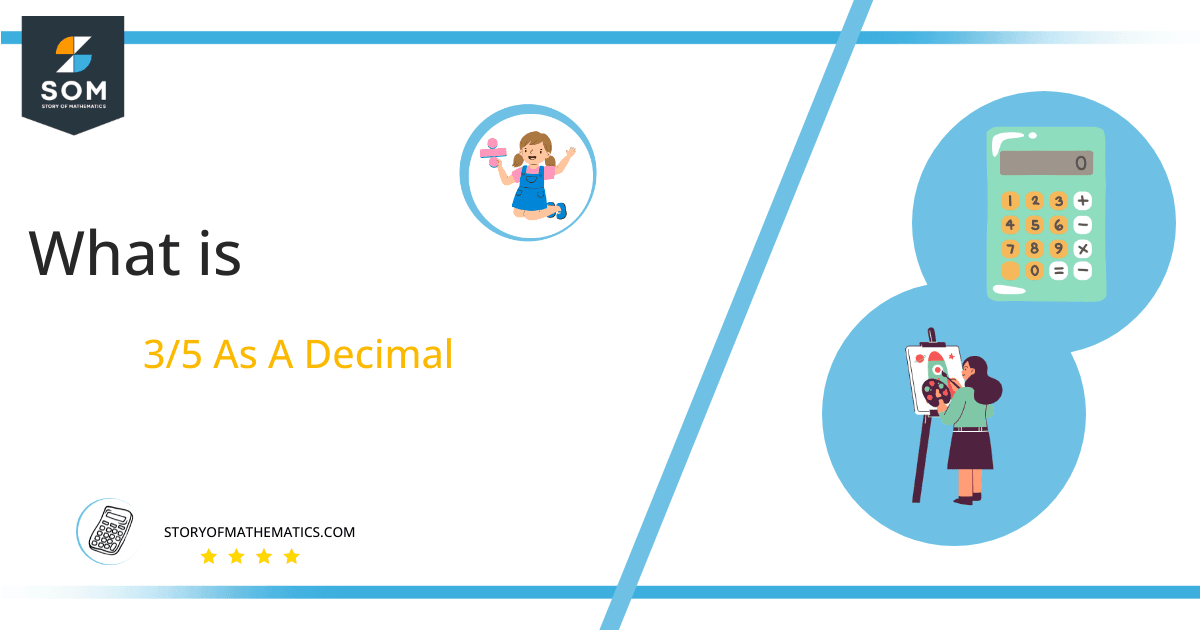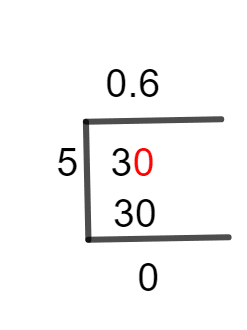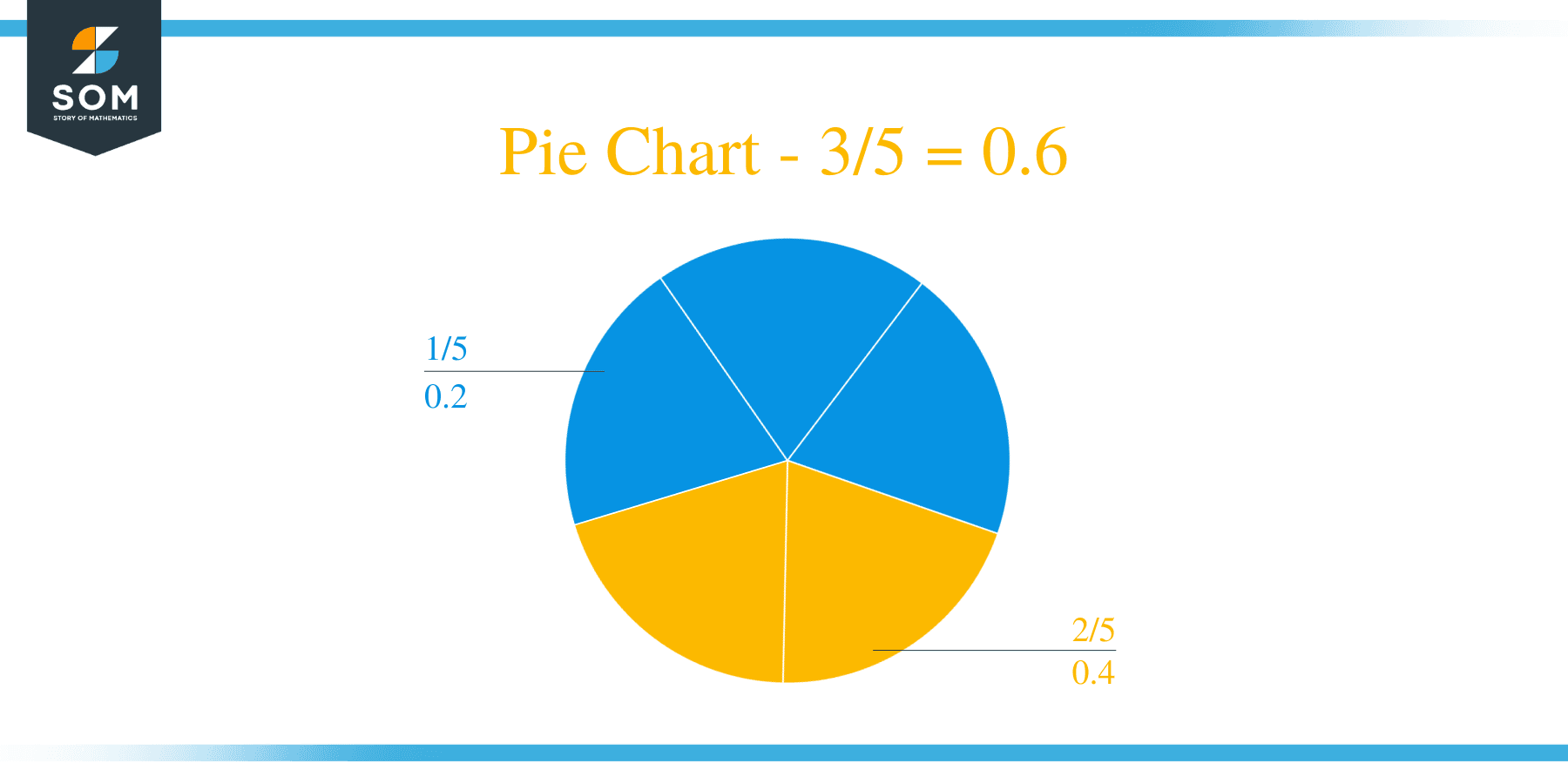What Is 3/5 as a Decimal + Solution With Free Steps
 The fraction 3/5 as a decimal is equal to 0.6.A Fraction is characterized as a portion of something larger. It defines the equal components taken from a whole quantity. The numerator and Denominator are the two constituents that make up a fraction.The top number is referred to as the numerator, and the bottom number is referred to as the denominator. The denominator indicates all equally sized portions or parts, whereas the numerator indicates the number of portions that were taken.Fraction is solved to get an equivalent decimal number by Division. The division is the practice of distributing a number into several equal parts. for example, 3/5 means to divide the number 3 into 5 equal parts.When compared to other mathematical operations, division frequently looks to be more difficult, but it is possible to solve this ostensibly challenging procedure using a manner that makes it simple.Here, Long Division is the method employed to resolve the supplied fraction of 3/5.
The fraction 3/5 as a decimal is equal to 0.6.A Fraction is characterized as a portion of something larger. It defines the equal components taken from a whole quantity. The numerator and Denominator are the two constituents that make up a fraction.The top number is referred to as the numerator, and the bottom number is referred to as the denominator. The denominator indicates all equally sized portions or parts, whereas the numerator indicates the number of portions that were taken.Fraction is solved to get an equivalent decimal number by Division. The division is the practice of distributing a number into several equal parts. for example, 3/5 means to divide the number 3 into 5 equal parts.When compared to other mathematical operations, division frequently looks to be more difficult, but it is possible to solve this ostensibly challenging procedure using a manner that makes it simple.Here, Long Division is the method employed to resolve the supplied fraction of 3/5.Solution
First, the Fraction is converted into division. Then components of division are differentiated according to how they operate to solve it. When dividing, the number to be split is denoted by the term Dividend, whereas the term Divisor denotes the number that divides the Dividend. The dividend and divisor in the above problem are 3 and 5, respectively.Following the full division of a fraction, we have a Quotient, which is the division’s outcome. Another important term related to division is Remainder, which is the value left behind after incomplete or partial division.The presented fraction can be expressed in the form of dividend and divisor as follows:Dividend = 3
Divisor = 5
Quotient = Dividend $\div$ Divisor = 3 $\div$ 5
To solve the given fraction, the Long Division method is employed.
Figure 1
3/5 Long Division Method
Now, we present detailed steps of the Long Division to obtain a decimal value of the fraction which is given to simplify.We have to solve 3/5.3 $\div$ 5
As it can be seen that it is a proper fraction i.e., the denominator is a larger number as compared to the numerator. Thus, we will have a decimal number less than 1 in Quotient. We must add a zero to the right of the numerator for introducing a Decimal Point. 3 is given as the numerator and 30 is obtained by adding a zero to the right of it.30 $\div$ 5 $\approx$ 6
Where:5 x 6 = 30
Since 5 is a factor of 30 so, it will divide 30 completely without producing any remainder.30 – 30 = 0
Hence, we have a zero Remainder, and Quotient is equal to 0.6. It implies that when the two numbers are divided completely, there is no remainder. Also, both the quotient and the divisor are factors of the dividend, when the remainder is zero. Images/mathematical drawings are created with GeoGebra.
Images/mathematical drawings are created with GeoGebra.